What is Solar Clipping? (Pros and Cons for Your PV System)
This post may contain affiliate links. Read my full disclosure here.
Solar clipping happens when solar electric (photovoltaic) panels provide more power than an inverter can handle. We will explain what clipping is and why clipping has some advantages and disadvantages.
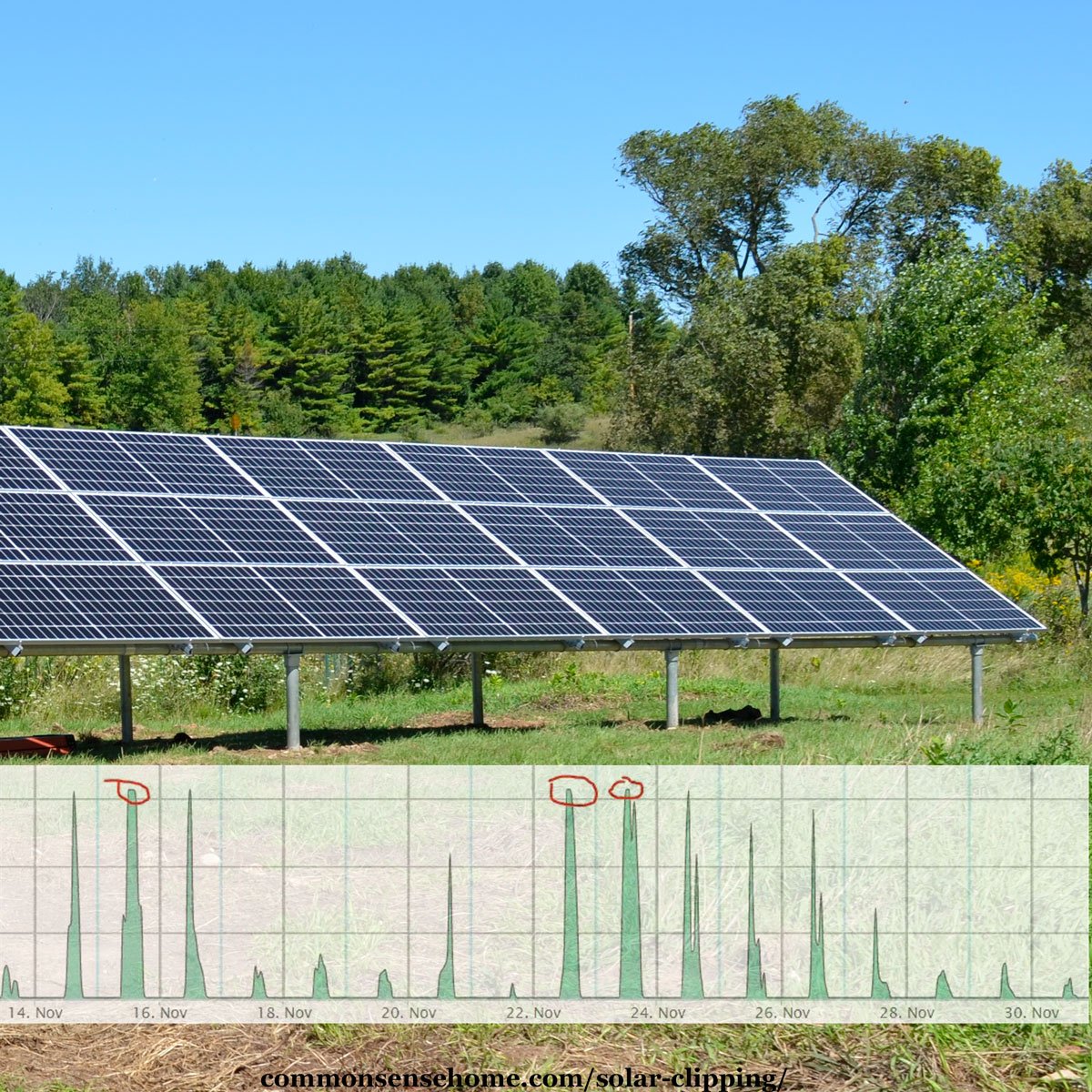
Table of contents
PV Introduction
In solar PV systems, solar electric panels generate DC electricity. Most homes use AC electricity. The inverter converts DC electricity to AC electricity, and has a limited AC capacity, typically between 3 kW and 7.6 kW.
A typical DC to AC ratio (array to inverter) is around 1.1 -1.2 to 1, i.e., the array is slightly larger than the inverter capacity. This means that DC power from the array is maxed out on a bright sunny day, there is energy lost because the inverter is not capable of converting all the DC power into AC power.
In the picture below, solar clipping occurs between 12:00 and 13:50 (noon and 1:50pm). (Notice the “flat top” in the middle of the day.)

How frequently does clipping occur?
In a properly designed system, clipping does not occur OR occurs for a only a small percent of each sunny day, so energy lost due to clipping is minimal.
In our examples, it occurs in 8.8% of sunny days. Clipping depends on your location (latitude) and the size of your solar panel array compared to the AC output of your inverter.
Clipping Examples over 30 days
In the picture below, you can see that our system reaches 7.6kw six times over 30 days in November and December. Here in Wisconsin, November and December historically have low levels of solar insolation. (There are not many sunny days, and the days are short.)
Solar clipping loss occurs on 6 of 30 days in the graph. This means that 20% of the days saw clipping, but only for a short period of time. In spring and summer, clipping will take place for longer periods.

Does solar clipping damage the system?
Yes and no, clipping doesn’t damage the solar array or inverter. The electricity gained at the beginning and end of the day generally outweighs the clipping losses. However excessive clipping can cause problems with the inverter, and can create an inconsistent power supply.
Clipping does not damage your battery storage, if you have battery backup.
How much solar clipping is normal?
Clipping is not “normal”. Some systems may clip and others may not. It’s simply the difference between how much solar power you have available and how much you can process. Array capacity vs inverter capacity.
I know it may sound obvious given what we’ve shared in this post, but we didn’t know about solar clipping when we had our system installed. We counted on the installer to size everything, since he’s been doing this for 10 years.
As power readings came in, we were only seeing around 6kW of power production. With a software update, that went up to just over 7kW, but never close to 10, even though the array size is over 10kW. This is how we discovered solar clipping.
We have a 10kw array and 7.6kw inverter.
How much power do we lose?
The picture below compares solar array power output. In this example we have 10.6kw of solar panels.
The solid red line is a 7.6kw inverter using the 10.6kw of panels. The red dash line is a 10.6kw inverter with 10.6kw of panels. The blue line represents a 10.6kw array on a less sunny day.
Would you like to save this?
The brown line represents the same less sunny day with a 7.6k array. Both the blue and brown lines never reach the 10.6kw or even the 7.6kw inverters.
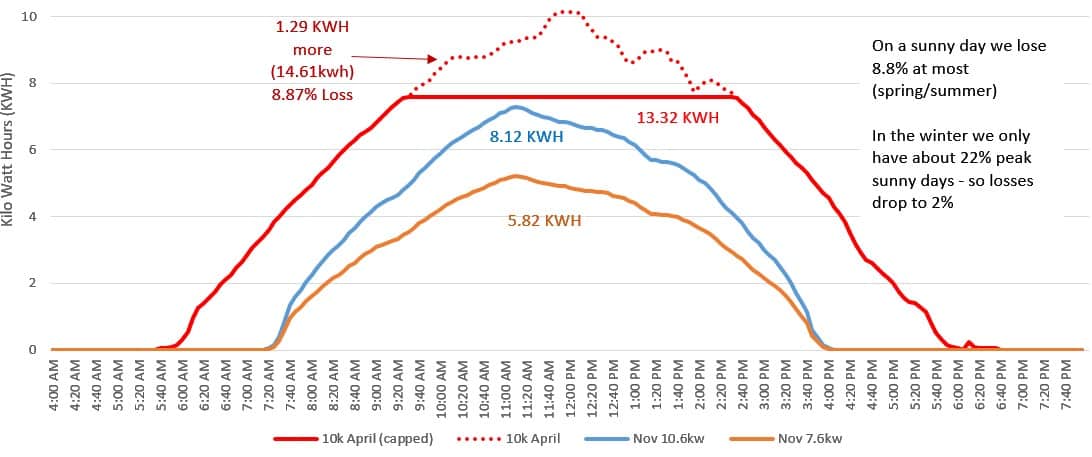
While we lose energy when the sun is at max, we gain energy at the beginning and end of the day with more panels. In the example above we actually only lost 1.29kwh (and gained 2.84kwh).
We could (theoretically) lose up to 3kw per hour at peak, but in the real world, the loss is closer to 1.5kw per hour. As long as we’re below 7.6 kW, we gain roughly 30% more energy per hour.
Because our array is oversized for the inverter, we get 30% more power on more than 80% of the days in summer, spring, winter and fall. We gain more power from this larger system in the morning and afternoon, but then lose energy when the panels are at maximum power production (clipping).
BUT you do “overload” the inverter when the sun is at full strength.
3 Reasons you Might want Solar Clipping
- Solar project located away from the equator in an area with less available sun.
- Morning/Afternoon Gains and Cloudy Day Gains
- Increased power production over the life of the system. Solar panels lose efficiency over time, between .6% and 1% annually. We expect our 10.6kw array will produce approximately:
- 10.2kw at 5 years
- 9.95kw at 10 years
- 9.4kw at 15 years
- 9kw at 20 years
3 Reasons you might NOT want Solar Clipping
- Inconsistent power supply during peak sun. For us that is May, June, and July in Wisconsin.
- Overloading the inverter. This is a low risk but not zero. I personally believe it will shorten the life of the inverter to deal with excessive clipping.
- Clipping causes power flickering. As the inverter is overloaded we get tiny drops in power that causes LED lights and some other devices to flicker. This only occurs during clipping.
Planning for Efficiency Losses and Less Sun
If you want the system to be fully powered for 20 years, you want to be at least 13% oversized because of lifetime loss and sun variability. At latitudes farther from the equator with less available sun, up to 30% excess panel capacity is advised.
Being oversized does not necessarily mean clipping. It means having 13% more “optimal” generation capacity than average load.
There are numerous resources to calculate how much “sun power” you will have available, such as the map below. Most inverter companies have software that allows you to plug in your location and electric load to automatically suggest system sizes.
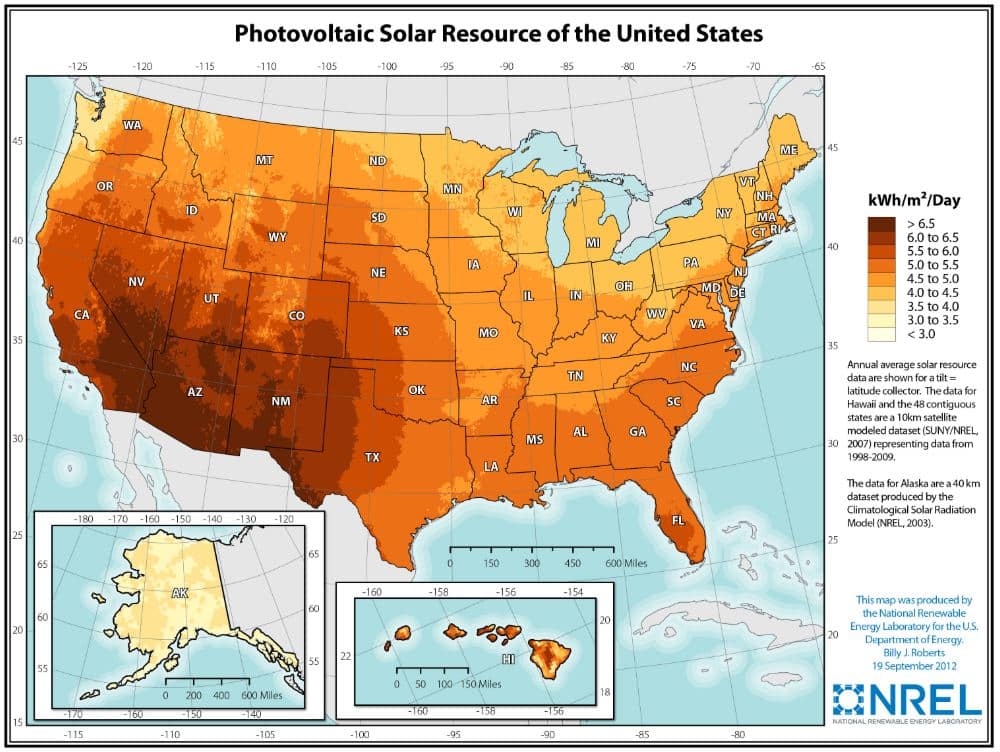
Sizing Examples
The list below gives examples of array sizing. Basically you figure out your average load and “slightly” oversize to allow for extra gain in poor conditions
- Load of 3kw should have about 3.4kw solar PV array and matching inverter.
- Load of 5kw should have about 5.7kw solar PV array and matching inverter.
- Load of 7kw should have about 7.8kw solar PV array and matching inverter.
We only show three “load” wattages, because most inverters only come in a few wattage ratings. We used a Pika (Generac) inverter. There are also good inverters from: SolarEdge and Outback. The Telsa ones are nice but crazy expensive.
NOTE: Most inverters larger than 10kw produce 3 phase AC power.
Most homes use single phase power and cannot easily use 3 phase. It’s possible to convert 3 phase to single phase electricity, but there is power loss during conversion. A converter also adds significant cost and complexity to the solar electric system.
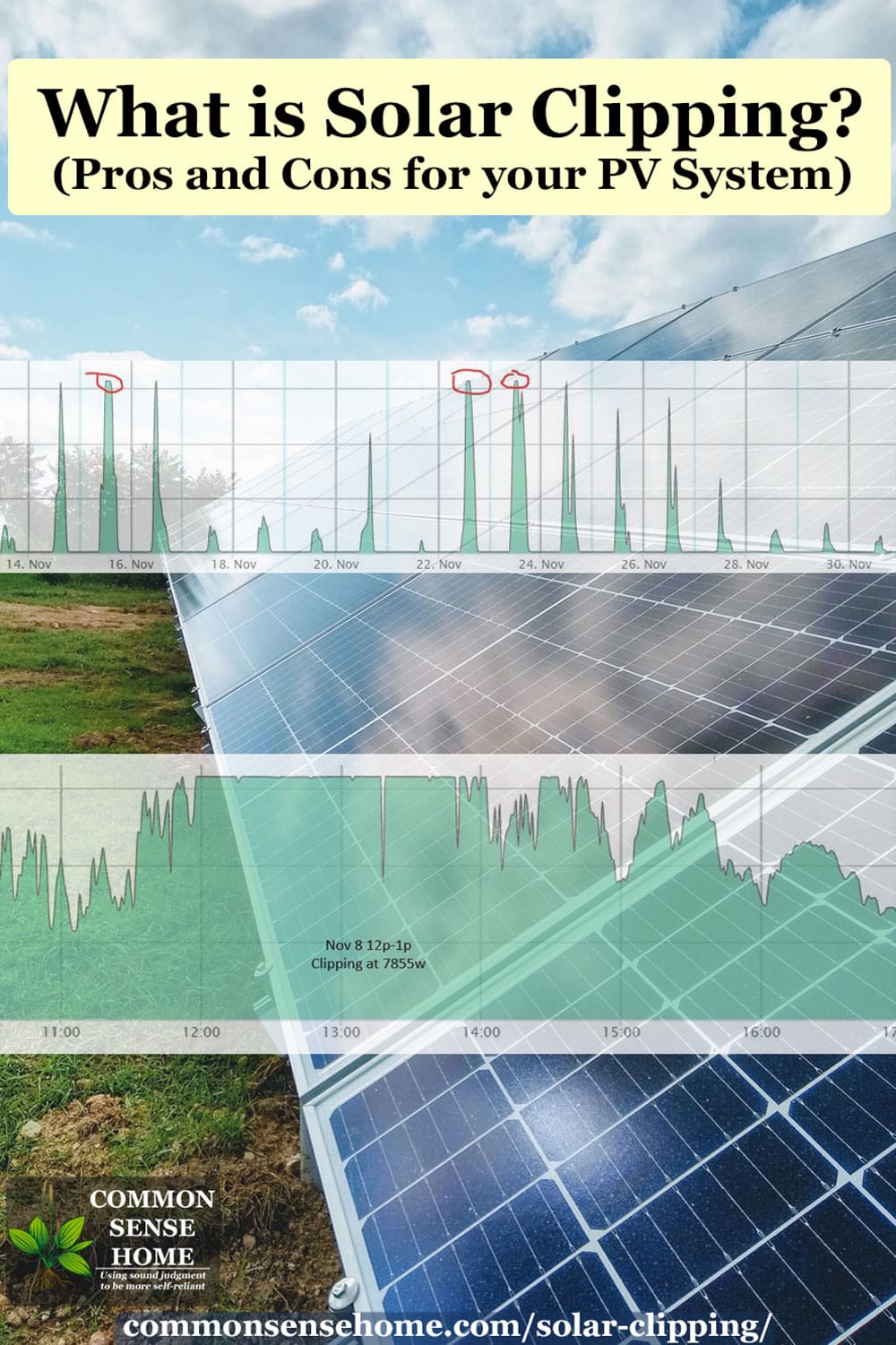
Leave a comment below with questions, or to share your experience.
Related Posts

This post was written by August Neverman IV. August has a strong background in emergency preparedness. He served on several emergency preparedness teams during his tenure at Brown County WI Government, the Medical College of Wisconsin, HSHS, a 13-hospital system and emergency response training during his time with the Air Force and Air National Guard. Learn more about August.

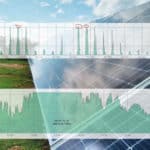
hi! I just read your article because of this same issue of clipping. I have an 8.8kw system here in Florida, but the peak power is capped at 6.5kw with plenty of clipping almost every day (22 panels). I can’t understand a 25% design loss, and I’m waiting for my installer to get back to me but i feel gipped having had to paid for a system i can only get 75% of. what am I missing?
As explained in the article, you do gain some electricity earlier and later in the day from having more panel capacity than inverter capacity, but yes, with 8.8kw of panels and an inverter capacity of 6.5kw in Florida, clipping is probably going to happen more often than not.
My guess is that they used the largest inverter size of their preferred inverter brand that was available without them adding a second inverter, which would greatly increase the cost of the system.
Last time I went inverter hunting, the larger inverters (over 10Kw) put out 3 phase power, so are not well suited for home use (as well as being more expensive). A unit like our 7.6kw Pika would have fit your array size better, but I’m not sure if they are even available anymore since Generac bought Pika.
I live off grid. We have 3 Kw array, with a MagnaSine 4024 inveter. My system is 13 years old. Panels are much cheaper now. Perhaps I should consider adding another Kw of panels?
It looks like you should have the capacity on your inverter for some more panels.
We’ve just installed a 5.4kW array with a 3.6kW inverter so the array is oversized by 50% which I don’t think it’s right as I’ve seen lots of clipping and we’re not even in summer yet.
They have offered to swap out the inverter for a 5kW one but that would mean that it oversized by only 8%
1) Does this sound like a good idea, I don’t want to lose energy?
2) Would having a bigger inverter mean I will lose energy when it’s cloudy it in the early morning.
Thank you
I’d suspect they used the smaller inverter to save money, or maybe they had trouble getting a more appropriate size at installation with all the supply chain issues going on.
1. Good idea – yes, I would think so. A 5 kw inverter would be a much closer fit to your array size.
2. No, you will not lose energy with a bigger inverter, just the opposite. It should be able to process all energy produced in the early morning and on cloudy days, as well as the majority of energy produced by your panels throughout the seasons.
We just added 1260 w of solar panels to our existing 6500 w of panels (7760 w). We use a SolarEdge SE6000US inverter. Can anyone tell me what would cause our system to clip at 5.3kw? I was expecting some clipping at 6kw but the output never goes above 5.3kw. I just hate to see those low flat tops.
What’s your voltage?
I’m looking at the specs for the SE6000 at Ecodirect, and Maximum AC Power is as follows:
208V: 5200 W
240V: 6000 W
277V: 6000 W
Could you by chance be operating at 208V?
Hi Laurie,
Thanks for the response. My inverter is running at 240 Vac. at least that is what the inverter window shows. Do you know of any specific settings that might make the inverter clip at 5.3kw? I do notice that the DC voltage shoots up when the wattage reaches the 5.3 kw level.
I’d reach out to the manufacturer of the unit. They might be able to suggest software updates, of if it’s connected to the internet for troubleshooting and data logging, they might be able to update the software for you. At the very least, they can let you know what’s possible and what’s not. Back when we first installed our system, PIKA (now owned by Generac) did remote software updates for us.
“While we lose energy when the sun is at max, we gain energy at the beginning and end of the day with more panels”
“Because our array is oversized for the inverter, we get 30% more power on more than 80% of the days in summer, spring, winter and fall. We gain more power from this larger system in the morning and afternoon, but then lose energy when the panels are at maximum power production (clipping)”
Can you explain a bit more on how you gain power by having a larger system/more panels? Wouldn’t your DC system be the same size even though you had a larger inverter?
1. Did you choose to buy more panels given the money saved from not buying a larger inverter?
2. Would your system produce 30% more energy than a 10.6 kW system with a 10 kW inverter?
If we had a larger single phase inverter, it could capture all the energy produced by the array without clipping. The problem is that once you get over the size of our current inverter, the larger inverters produce 3 phase power. Our home, like most homes, is wired for single phase power. You can convert 3 phase to single phase, but you lose energy in the process, pretty much wiping out your gains, and spending a LOT more money.
With the current setup, we lose a little midday because of clipping, but there are more panels gathering more energy earlier and later in the day.
1. We have the number of panels we have because they should be able to produce enough energy to meet our energy load over the course of a year. Unfortunately, there is no affordable seasonal home energy storage at this time, so we end up selling excess electricity to the grid in summer at around 3 cents per kilowatt, and buying in winter at around 12 cents per kilowatt, plus around $25 a month in fees for being hooked up to the grid. We have never had a month where the utility paid us, only smaller bills.
2. If we had a larger single phase inverter, it would produce more electricity than the current system, because we wouldn’t have the clipping loss, but as I explained above, they are not currently available.
The “30% more energy” is because the 10kW of panels produces more than 7.6 kW of panel capacity. 7.6 kW is roughly 305 less surface area gathering sunlight.
From April through October last year (2021), we produced more than we used, except for September, where we used slightly more than we produced. January, February, March, November, December we used more than we produced.
you could you go with a DC side battery and capture the clipped power to the use later in the day/evening.
To the best of my knowledge, there is not currently an “off the shelf” product that does this. It’s possible that someone might be able to rig something up, but it would be likely to void the warranty on the inverter.
One additional reason not mentioned is net metering. In Massachusetts, there is a cap on total net metering capacity. However, solar PV systems under 10 kW are exempt from this cap. For a residential application, one might want to install, say, 12 kW DC but only a 10 kW inverter to maximize production and remain under the 10 kW limit.
I haver 43 panels and was told it would make 12.5 KW but I am being clipped at 10K is there any way to get that lost 2.5K watts?
What’s your inverter rated for? If the inverter is not rated for 12.5, then you can’t get 12.5 kW unless you have a bigger inverter.
My inverter is always on. I will be happy if i can buy another, automatically going sleep/out in the night and wake up in the morning. Does exist any doing so?
We are not aware of any at this time.
What type of software update did you need/ get? Was it for the inverter? Or was it from the company(ie Tesla)?
The software update was for the inverter (the only part of the system with software). We have a Pika/Generac inverter and battery bank. The Tesla systems were on back order for our area (at least, that’s what the installer told us). The software update came from the inverter company. The unit requires an internet connection for data logging, troubleshooting and software updates.
I had a 4.3 Kw system installed last December and everything worked great until the days started getting longer and the system was still producing after 6 PM when we would watch the news. The Solar Edge inverter and the Panasonic solar panels both produce RFI which interfered with the over the air TV antenna signal. I called the solar company and all they said was to move the antenna, which was there when they assessed the site. The antenna is up 30 feet with a footing in the ground and attached to the house for support so it is not going to get moved. Long story short if we want to watch TV when the system is producing we have to shut off the inverter for up to an hour a day. I am researching bandpass and notch filters to place inline with the TV coax cable. So if you get your TV signal from over the air try to keep your antenna as far away from your solar system as possible.
Thanks for the warning.
I wouldn’t call it clipping myself, I think of it instead as a panel surplus that allows for greater production at the beginning and end of day, as the article states, and during cloudy times. The two components of a grid tied system can be of any size you want, laws permitting, but it usually is dictated by common sense and government subsidies.
Here in Australia the Federal government will actually pay for all the solar panels on a typical home through the “Small-scale Technology Certificates” scheme, and it makes sense to get extra panels over the 5kVA inverter capacity. 5kVA being the limit for a single phase home. If you had to pay for it all yourself you may go in another direction and if there was no limit to the amount you could pump into the grid, then another direction again.
The biggest mistake people make with solar is they get confused in the first few days of research into it all and then sign up with someone to avoid the thinking process, usually a marketing company that rips them off with a shoddy job and shoddy components. It’s not easy getting your head around all the brands, feed in tariffs, types of installation etc. It takes time and you need to use your brain over time and not give in and let someone else do your thinking for you. If I gave one piece of advice it would be NEVER go with a big company for installation, always choose a small one run by a licensed electrician that has been in business for 5 years or more. Big ones come and go like flies, shutting down and opening up under another legal name to avoid warranty claims.